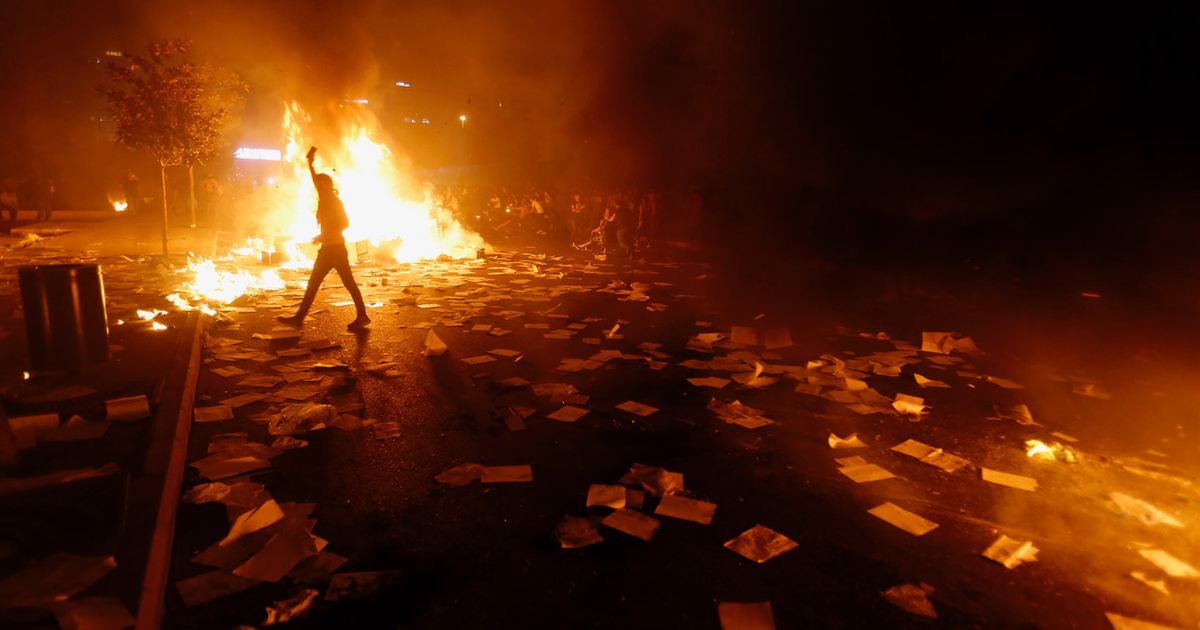Marwan Tahtah's Revolution in Lebanon, October 17, 2019 Courtesy of the artist
Above all, Lebanon Then and Now: Photography from 2006 to 2020 is a product of evolving circumstances. Organised by Washington, DCs Middle East Institute (MEI) Art Gallery, the planned physical show had to be reimagined as a 360-degree, virtual exhibition because of the coronavirus pandemic. The shows urgency was then dramatically heightened on 4 August by the horrific explosion at Beiruts port, when the decades of political mismanagement, devastating currency devaluation, and waves of popular uprising detailed in the exhibition took on a tragic foreshadowing.
The 50 works from 17 photographers and one film-maker are drawn from two major exhibitions—Lebanon: Between Reality and Fiction atthe Institut du Monde Arabe in Paris last year, which focused on the lingering impacts of Lebanons civil war (1975-90), and Revolt, developed in real time by the Beirut Center of Photography and APEAL, during the October 2019 protests in the Lebanese capital.
While officially framed as a cohesive repositioning of the two shows, the actual experience feels more layered than unified. Forged through international collaborations and re-organised as a (fairly glitch-free) digital experience, the lines of connection or disassociation between the images themselves and widespread virtual audiences feel revelatory, further exposing connections between Lebanons historical past and current reality.
Myriam Boulos's Nightshift 12 (2015) Courtesy of the artist
The evocative storytelling created by the art photographers Vladimir Antaki, Myriam Boulos, Jana Khoury, Emilie Madi, Vicky Mokbel, Elias Moubarak and Badr Safadi, complements the work of traditional photojournalists from both local and international news agencies, such as Pierre Aboujaoude, Hussein Baydoun, Tanino Musso and Jack Seikaly. It also makes the abstract, amorphous crisis the country is facing more concrete and personal. Historic losses are beautifully laid bare in Maria Kassabs poignant collages and Dalia Khamissys intimate series of “missing” portraits, while the stark destruction in Ieva Saudargaite Douaihis architectural photographs is eerily prescient of this summers blast. Emotions swing from the exuberant protesters documented by Blanche Eid to the unsettling post-apocalyptic moments captured by Marwan Tahtah.
"The show, which has already brought 20,000 visitors to our site, coincided with so many rapidly unfolding events in Lebanon in a short time: a protest movement, an economic collapse, Covid-19," says Lyne Sneige, the director of the MEI Art Gallery. "But we never imagined such a tragedy as the catastrophic explosion that rocked Beirut and ripped through entire neighbourhoods, wiping out the citys vibrant arts district. The horrific blast underscores the importance of documenting and archiving lives and communities in Lebanon."
Omar Sfeir's The Lovers in TRead More – Source
[contf]
[contfnew]
the art news paper
[contfnewc]
[contfnewc]





